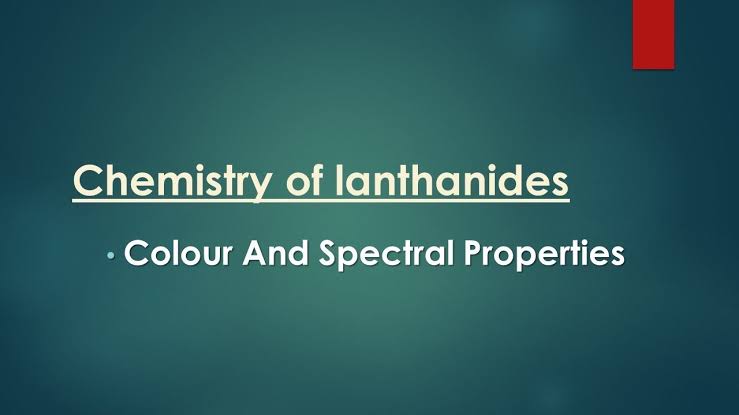W.B.C.S. Examination Notes On – Chemistry – Spectral Properties.
Chemistry is one such optional offered in the W.B.C.S. Examination. It is one of the optional subjects that is preferred by the aspirants graduated with the subject. Chemistry optional is a scoring subject if aspirants have sound knowledge in it. Similar to other optional papers, chemistry also has two papers. The paper I of chemistry optional deals with Inorganic Chemistry and Physical Chemistry. Paper-II completely deals with Organic Chemistry.Following previous years question papers are a must when it comes to optional subjects.Continue Reading W.B.C.S. Examination Notes On – Chemistry – Spectral Properties.
Octa-coordinated La(III), Ce(III), Pr(III), Nd(III), Sm(III), Gd(III) and Dy(III) complexes of 3-amino-2-hydroxy-1,4-naphthoquinone (3A2HNQ) of general formula [M(3A2HNQ)3(H2O)2] have been synthesized and characterized.
The non-isothermal thermogravimetric profiles indicate the loss of one of the coordinated ligands along with one coordinated water molecule at a significantly higher energy of activation than that of the second step of decomposition with loss of two ligands and one water molecule. Such a difference in the energy of activation for the two steps can be correlated to the strong intermolecular hydrogen bonding interactions between quinone carbonyls and coordinated water molecules.
These chelates exhibit slightly lowered magnetic moments probably due to their polymeric nature. IR and far-IR spectral data suggest that phenolic oxygen and amino nitrogen are the coordinating sites for 3A2HNQ, while coordinated water molecules are involved in the intermolecular hydrogen bonding interactions with free quinone carbonyls of 3A2HNQ molecules. The nephelauxetic ratio (β), covalency factor (b1/2) and Sinha’s parameter (δ) evaluated from electronic spectral studies of Ce(III), Sm(III), Gd(III) and Dy(III) reveal a negligible amount of covalency in metal-ligand bonding.
Mixed-ligand double-decker complexes containing tetrabenzoporphyrin and phthalocyanine fragments were synthesized by reaction of phthalocyanine dilithium salt with tetrabenzoporphyrin complexes of lutetium, dysprosium, gadolinium, neodymium, and lanthanum. A relation was found between spectral parameters of the obtained sandwich complexes and radii of the central metal ions.
An analysis of the electronic optical properties and solubility in chloroform and DMF of the erbium and ytterbium complexes with porphyrazine and its octaphenyl- and octa(p-alkylsulfamoylphenyl)-substituted derivatives and tetrapyrazinoporphyrazine and its octaethyl-, tetra(tert-butyl)-, and octaphenyl-substituted derivatives is presented.
Please subscribe here to get all future updates on this post/page/category/website


 Toll Free 1800 572 9282
Toll Free 1800 572 9282  mailus@wbcsmadeeasy.in
mailus@wbcsmadeeasy.in



















































































































